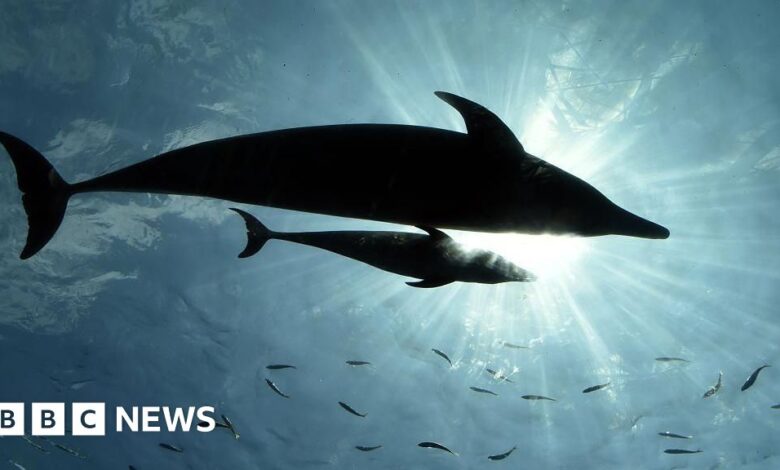Experts suspect lonely dolphins are to blame for the rise in attacks

Dolphins may be portrayed as friendly creatures in fairy tales, but residents of one coastal town in Japan have been given strict advice to stay away from them.
The warning in Mihama town, Fukui prefecture is even more dire: “They can bite you with their sharp teeth and make you bleed, or… drag you into the sea, which can be life-threatening.”
For the third year in a row, there has been a spike in dolphin attacks in Fukui, which marine experts say is being blamed on a lonely and sexually frustrated bottlenose dolphin.
The coast guard said eighteen people have been injured this summer on the province’s beaches, including an elementary school student who needed at least 20 stitches in his finger.
At least six people were injured last year.including a swimmer with a broken rib, and one in 2022.
Tadamichi Morisaka, a dolphin professor at Mie University in Japan, said the dorsal fin of a dolphin found biting a man’s finger on a beach in Tsuruga – a port city near Mihama – was similar to the dorsal fin of a 2.5-meter-long dolphin observed off the coast of Fukui last year.
The dorsal fin is like a dolphin’s fingerprint because each fin has distinct grooves, ridges, and pigmentation.
“It is reasonable to assume that this is the same individual, as the injury to the tail fin is similar to that of dolphins seen off the coast last year, and it is rare for dolphins, which usually travel in groups, to be alone for such a long time,” Professor Morisaka told NHK.
He added that male bottlenose dolphins communicate by “playing with each other”. “They are not trying to harm humans, but using the way dolphins communicate with humans,” he said.
Others have offered various theories as to why the same creature is behind these attacks – including sexual desire.
“Bottlenose dolphins are highly social animals and this sociality can be expressed in many very physical ways,” said Dr Simon Allen, biologist and lead researcher of the Shark Bay Dolphin Research project.
“As in humans and other social animals, hormonal changes, sexual inhibition or a desire for dominance can cause dolphins to injure people they interact with. Since they are very powerful animals, this can lead to serious injuries in humans,” he said.
Dr Allen added that the dolphin may have been “estranged from its community and was looking for alternative companions”.
Dr Matthias Hoffmann-Kuhnt, a marine mammal expert at the National University of Singapore, said dolphins could also act in self-defense.
“In my experience, most of the time it’s defensive behavior when people get too close to these dolphins and don’t know how to behave,” he said, referring to reports of people trying to ride the animals or sticking their fingers into the dolphins’ breathing holes.
“So it’s no surprise that animals become aggressive or at least protective of humans underwater,” he said.
It is also possible that the dolphin previously had a poor relationship with humans and now associates that relationship with other people it meets, Dr Hoffmann-Kuhnt said.
“They have good memories, like elephants, they will remember who has treated them badly before,” he said.
Dolphin attacks can be fatal. In 1994, a dolphin in Brazil attacked two male swimmers who were trying to ride it, killing one and injuring the other. The dolphin, nicknamed Tião, is believed to have injured at least 22 people before.
Additional reporting by Chika Nakayama in Tokyo




